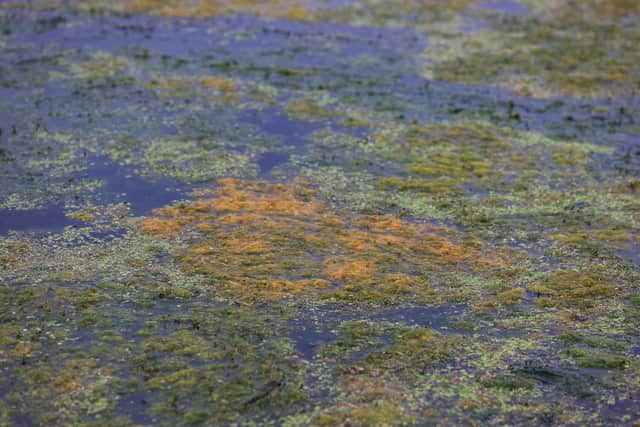Lough Neagh algae: Panel of government experts say lough not safe to swim in - but is safe for drinking water
and live on Freeview channel 276
In a briefing to journalists today, the experts also attempted to explain how fish caught by anglers from the lough are not safe to eat - but those caught by commercial fisheries are.
Lough Neagh supplies 40% of Northern Ireland’s drinking water. Toxic algae has covered large parts of the lough during the summer.
Advertisement
Hide AdAdvertisement
Hide AdDuring a media briefing on Thursday, Stormont officials said toxic algae growth is linked to excess nitrogen and phosphorus in the water from fertilisers.


They said that special interventions in 2006 had seen phosphate levels in water courses plummet until 2012. At that point they began steadily rising again - having increased by 50% up until now.
NI Water said that they do reduce phosphorus in waste water they produce, but they had been turned down in requests for cash to implement more sophisticated processes to reduce it further.
The experts could not say clearly when it would be safe to swim in the lough again.
Advertisement
Hide AdAdvertisement
Hide AdThe News Letter suggested to them that the man in the street might find it difficult to understand how the lough is not safe to swim in and not safe for livestock to drink from - is safe to eat fish from and drink water from.
Dympna Gallagher, Head of Drinking Water Regulation at NI Water replied.
"We can give complete assurance that drinking water from Lough Neagh which is taken to our treatment works and treated is safe to drink," she said.
"There is a great distinction between direct contact with blue green algae and in raw water and what you get in your tap and that is because of the treatment process that we have in place.
Advertisement
Hide AdAdvertisement
Hide Ad"We do a risk based, evidence based analysis to understand the colour of raw water, the Ph of it and the blue green algae risk. And then we put treatment in place."
Robin May, Chief Scientific Adviser from the Food Standards Agency, said that commercial fish from the Lough were safe - but not fish caught by anglers.
“If there is toxin in a fish it is likely to accumulate in the internal organs which are removed by commercial fisheries but not always by people privately fishing," he said.
The News Letter queried if it was true that private anglers don't know how to gut their own fish?
Advertisement
Hide AdAdvertisement
Hide AdMr May replied: "The additional risk to the angler is the contact with the water. They are in the water and they are handling the fish beforehand. And there is an additional risk of the untreated water to the angler which isn't true if you are buying commercially prepared fish at the other end."
The spread of the invasive zebra mussel species was also cited as a factor in the algae as it has made the water clearer and allowed the algae to photosynthesise more easily. Climate change was also cited with the highest ever water temperature at Lough Neagh recorded in June.
Paul Donnelly, CEO of the Northern Ireland Environment Agency (NIEA), said a working group is being put together to combat the algae, but that investment was going to be needed.
Following a multi-agency meeting on Wednesday, UUP Environment spokesperson Tom Elliott called for a "management task force" with input from all stakeholders to tackle the problems.